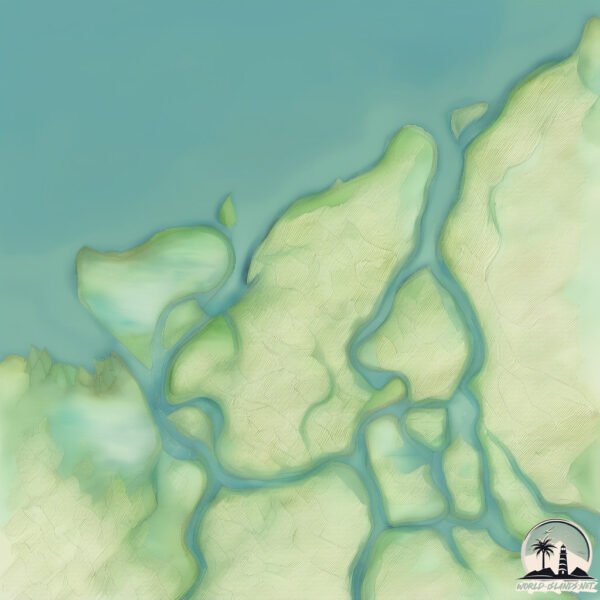Welcome to Hobler , a Tropical island in the Arafura Sea, part of the majestic Indian Ocean. This guide offers a comprehensive overview of what makes Hobler unique – from its geography and climate to its population, infrastructure, and beyond. Dive into the details:
Geography and size of Hobler
Size: 11.4 km²Coastline: 21.2 kmOcean: Indian OceanSea: Arafura SeaContinent: Oceania
Hobler is a Medium Island spanning 11 km² with a coastline of 21 km.
Archipel: –
Tectonic Plate: Australia – A major tectonic plate covering Australia, New Zealand, and parts of the Indian and Pacific Oceans, known for its relative stability and occasional seismic activity.
The geographic heart of the island is pinpointed at these coordinates:
Climate and weather of Hobler
Climate Zone: TropicalClimate Details: Tropical Savanna, WetTemperature: Hot
Climate Characteristics: Defined by distinct wet and dry seasons with high temperatures year-round. Pronounced rainfall occurs during the wet season, while the dry season is marked by drought.
Topography and nature of Hobler
Timezone: UTC+09:30Timezone places: Australia/AdelaideMax. Elevation: 4 m Mean Elevation: 2 mVegetation: Mangrove ForestTree Coverage: 34%
The mean elevation is 2 m. The highest elevation on the island reaches approximately 4 meters above sea level. The island is characterized by Plains: Flat, low-lying lands characterized by a maximum elevation of up to 200 meters. On islands, plains are typically coastal lowlands or central flat areas.
Dominating Vegetation: Mangrove Forest
Vegetation: 2 vegetation zones – Low Diversity Island
Infrastructure and Travelling to Hobler
Does the island have a public airport? no .
Does the island have a major port? no .
The mean population of Hobler is 0 per km². Hobler is Uninhabited. The island belongs to Australia .
Continuing your journey, South West is the next notable island, situated merely km away.
Hooked up while Fishing around Sir Edward Pellew Group of Islands - Northern Territory, Australia
Base Camp at Paradice Bay - Barranyi (North Island), Northern Territory Australia. Fishing the surrounding areas of the Sir ...
Hooked up while Fishing around Sir Edward Pellew Group of Islands - Northern Territory, Australia
Base Camp at Paradice Bay - Barranyi (North Island), Northern ...
Base Camp at Paradice Bay - Barranyi (North Island), Northern Territory Australia. Fishing the surrounding areas of the Sir ...
Landed a Solid Fish on Lure while Casting at an Island near King Ash Bay, Northern Territory
Sir Edward Pellew Group is cluster of barren sandstone islands in the ...
Sir Edward Pellew Group is cluster of barren sandstone islands in the Gulf of Carpentaria, near the mouth of the McArthur River, ...
Australia is classified as Developed region: nonG7: Developed economies outside of the Group of Seven, characterized by high income and advanced economic structures. The level of income is High income: OECD.
News – Latest Updates and Headlines from Hobler
Stay informed with the most recent news and important headlines from Hobler. Here’s a roundup of the latest developments.
Loading...
Please note: The data used here has been primarily extracted from satellite readings. Deviations from exact values may occur, particularly regarding the height of elevations and population density. Land area and coastline measurements refer to average values at mean high tide.

